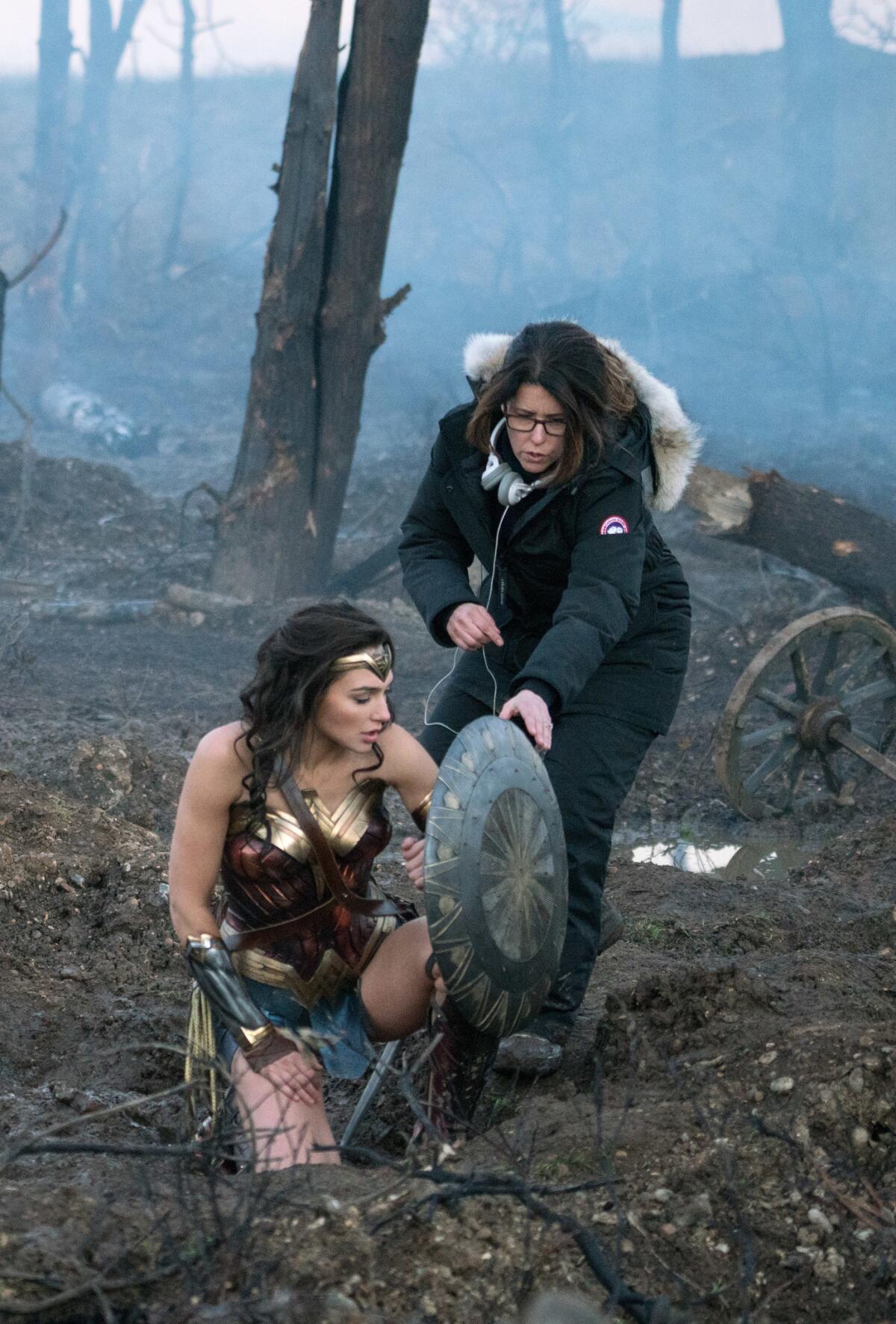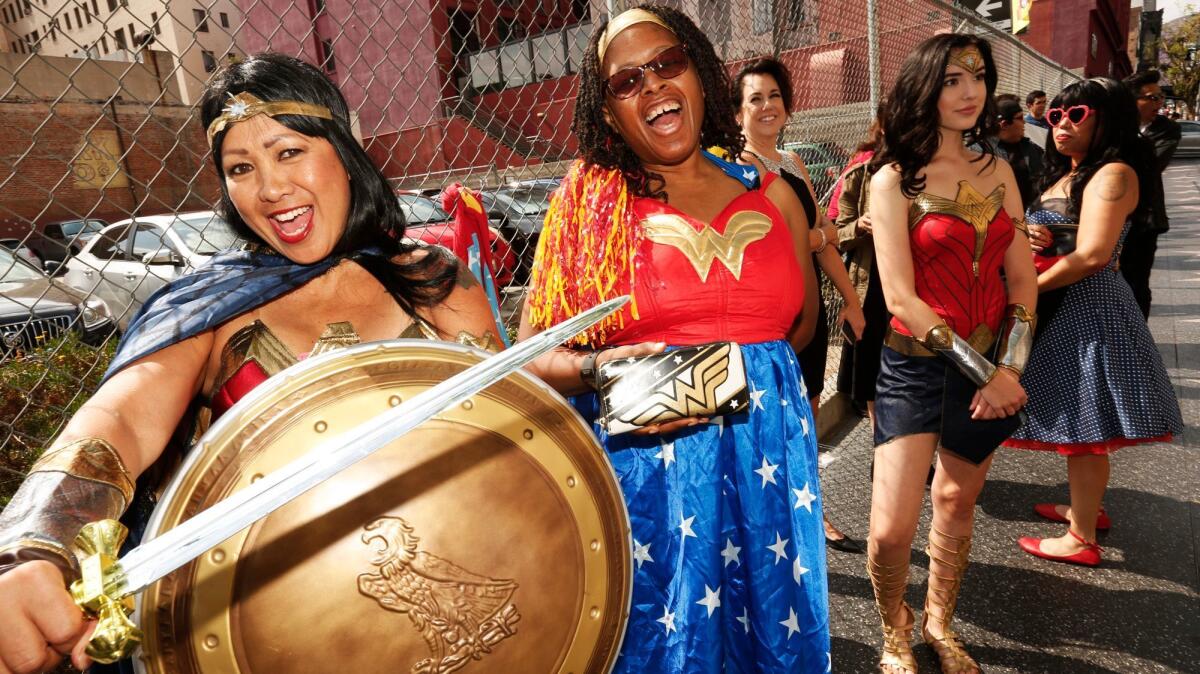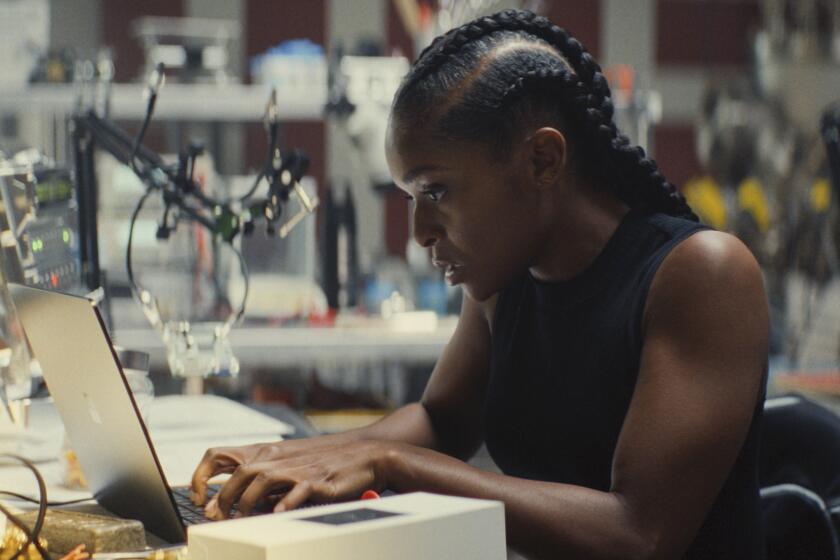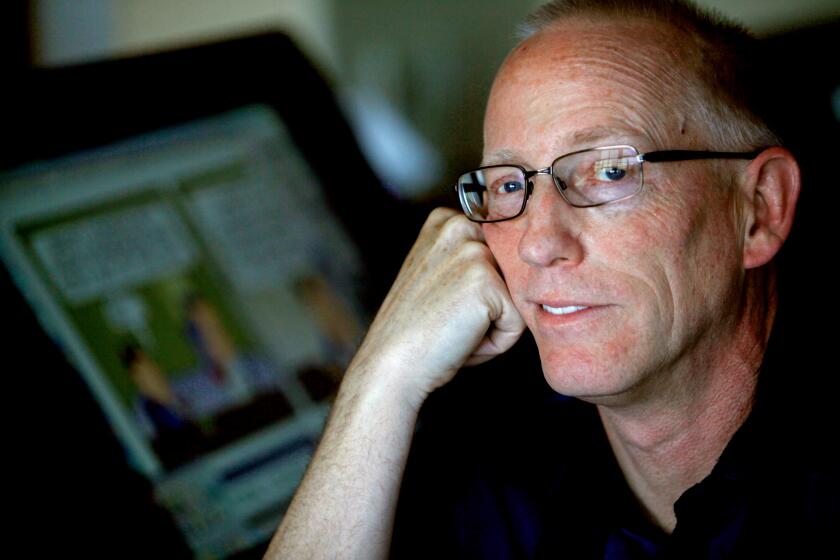Why I cried through the fight scenes in ‘Wonder Woman’

Of all the scenes in ‘Wonder Woman,’ the fight scenes proved surprisingly emotional for some.(June 5, 2017) (Sign up for our free video newsletter here http://bit.ly/2n6VKPR)
- Share via
I did not expect to cry during “Wonder Woman.”
Specifically, I did not expect to tear up during the fight scenes. OK, maybe if
But that’s exactly what happened; when Wonder Woman started fighting, out came the waterworks.
It started on the beach, when Gen. Antiope (Robin Wright) rode into battle with a smile and Queen Hippolyta (Connie Nielsen) leaped off her horse, spinning into the air to wipe out two armed men with her sword. As the battle raged on, it became clear that the scene was not window-dressing, 10 seconds of Amazon showtime before the real movie started. This was the movie — female warriors kicking ass.
They were fierce and powerful, highly trained soldiers who knew what they were doing, and the film took that, and them, seriously. It was overwhelming.
And then came No Man’s Land.
Having left her people to help end World War I, Diana travels with Steve Trevor (
But Diana has had enough. When Steve tells her that they can’t save everyone in this war because “it’s not what we’re here to do,” she agrees.
“You’re right,” she says. “But it’s what I am going to do.”
Pulling off her disguise to reveal her true Wonder Woman self, she climbs a ladder and walks solemnly into No Man’s Land. Deflecting bullets with her bracelets, leaning into machine gun fire with her shield, she marches forward spurring the men to follow her. Wonder Woman takes the town.
It was tremendous.

It felt like I was discovering something I didn’t even know I had always wanted. A need that I had boxed up and buried deep after three movies of Iron Man punching bad guys in the face, three more movies of Captain America punching bad guys in the face, a movie about Superman and Batman punching each other in the face and then “Suicide Squad.”
Witnessing a woman hold the field, and the camera, for that long blew open an arguably monotonous genre. We didn’t need a computer-generated tree or a sassy raccoon to change the superhero game; what we needed was a woman.
“Wonder Woman” director Patty Jenkins wasn’t too surprised when I described my tearful reaction. “I’ve heard that a lot,” she said.
And sure enough, as “Wonder Woman” blazed through its opening weekend, the Internet was flooded with tales of tears. “Wept through every fight scene in Wonder Woman AMA,” tweeted Shani O. Hilton (head of U.S. news for BuzzFeed News). “I just thought about the No Man's Land sequence & started crying again,” writer and director Julia Hart said online.
Amazingly, Jenkins had to fight for that No Man’s Land scene. “Nobody understood what I was trying to do there,” she said. “It was a scene that everybody was like, ‘Ah, OK, but we're doing this cool thing in the town, why are you worried about that?’ I think to some of the people I was working with it was confusing. ‘Who's she fighting?’ [But] it's not about that, it's about her.
”I think they [finally] got it, but I don't know that people got how important it was going to be until they saw the movie.”
Looking back on my own career covering superhero flicks, there has always been this need for more, and those who don’t understand it. “Avengers: The Age of Ultron” was definitely a tipping point. The treatment of
I was working for io9 at the time and, with Katharine Trendacosta wrote “Black Widow: This Is Why We Can’t Have Nice Things,” bemoaning the exclusion of Black Widow from the Avengers toy set pack, the character’s slut-shaming in the press by her own teammates, and the revelation that her long-awaited backstory was about her forced sterilization.
Many people agreed with us, but many did not. We were accused of being too touchy or flat out wrong. One fellow journalist politely informed me that I simply did not understand what Joss Whedon was trying to do with his “family” theme.
The world had embraced characters like Captain America and Superman who are compelled by their sense of duty, honor and morality. But every time we had a powerful woman, she had to be justified or complicated somehow. It took 75 years to make a movie about a female superhero motivated purely by love.

Maybe the tears that welled while watching Wonder Woman flip a tank were an emotional release for years of frustration, of being told “no” or that I “didn’t get it.” Here was proof of what many of us have known all along: There aren’t “types” of female characters and types of male characters that movies must perpetuate or else.
That a movie starring a superhero woman could be just that. And make money: “Wonder Woman” grossed an estimated $100.5 million in the U.S and Canada in its debut weekend.
Diana Prince can love ice cream, babies and sex but can also slay on the battlefield with the same amount of screen time given to her super predecessors. She doesn’t need to be some complicated, male-skewed Hollywood vision of damaged or broken or misunderstood. She’s Wonder Woman.
And that is more than enough.
------------
For the Record, June 5, 1:27 p.m.: An earlier version of this article misspelled io9 writer Katharine Trendacosta’s first name as Katherine.
------------
See the most-read stories in Entertainment this hour »

Twitter: @MdellW
ALSO:
Review: The stirring 'Wonder Woman' comes to the rescue of the DC Comics universe
Lebanon officially bans 'Wonder Woman' from theaters
The world needs Wonder Woman. Director Patty Jenkins explains why
What it's like to be a real-life Amazon on the set of 'Wonder Woman'
75 years of world-saving: Everything you need to know about 'Wonder Woman'
The biggest entertainment stories
Get our big stories about Hollywood, film, television, music, arts, culture and more right in your inbox as soon as they publish.
You may occasionally receive promotional content from the Los Angeles Times.








